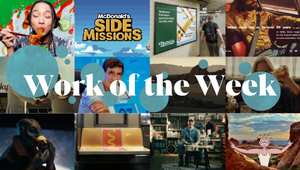
The Rise of AI Art

The year is 2030, and AI can finally recreate videos of fake events and pass them off as real occurrences. We have videos of Donald Trump getting into a bar fight with Barack Obama. We have footage of a UFO flying over the White House. We have images of aliens walking among us. And we have art, created by AI, that is indistinguishable from human-created art. The death of the artist has been predicted for centuries, but with the rise of AI-created art, it may finally come to pass. With AI able to create realistic and compelling works of art, there will be no need for human artists anymore. The market for art will dry up, and artists will be forced to find new ways to make a living. This may sound like a dystopian future, but it is already happening to some extent.
In 2017, an AI-created painting sold at auction for $432,000, far more than any human artist could hope to receive for their work. As AI technology continues to improve, it is only going to become more difficult for human artists to compete. There are those who believe that AI-created art is not really art at all. They argue that true art requires a human touch and that AI cannot replicate the creative process. But as AI-created art continues to improve, it is becoming harder and harder to tell the difference between what is created by humans and what is created by machines.
So far, AI-created art has mostly been used for commercial purposes, such as creating realistic images for movies or video games. But as AI gets better at creating art, it is likely that more people will turn to AI-created works for their personal enjoyment. After all, why buy a painting from a human artist when you can get an AI-created one that looks just as good – or even better? Quite recently, The Guardian covered a new AI-powered rapper named FN Meka, who got famous on TikTok. Luckily, his music is fairly mediocre, but this is just the beginning. In the future, we may see entire galleries filled with AI-created art, and human artists may be relegated to obscurity. Or, perhaps humans will find new ways to use their creativity and imagination that are beyond the ability of machines.
But what about human emotion? Will AI be able to replicate that? We cannot know for sure until AI becomes more advanced. However, even if AI can replicate human emotions, it is doubtful that it will be able to do so in a way that is indistinguishable from humans. After all, humans have been expressing emotions through art for centuries, and AI has only just begun to create its own art. In the end, whether or not AI-created art is truly art will depend on your definition of art. If you believe that art must be created by humans, then AI-created art will never be real art. But if you believe that art can be created by anyone – including machines – then AI-created art is already starting to change the landscape of the art world.
And what will this mean for future artists? Will children still want to learn how to draw? Possibly, but they also might be more interested in learning how to use AI to create art. After all, if AI can create realistic and compelling works of art, why would anyone want to bother with traditional methods?
Thus, the obfuscation of truth continues. Fake news becomes even more realistic with the help of AI, and world famous artists don't know anything about their craft, because they use AI and pass it off as their own. What's the solution? One possible solution is to create a system where AI-created art is clearly labelled as such. This would allow people to still enjoy AI-created art, while also knowing that it is not real art. Another possible solution is to encourage people to create their own art, using traditional methods or otherwise. This would help to keep the market for art alive and allow human artists to continue making a living. However, Murphy's law states that "Anything that can go wrong will go wrong," and thus, if humans can profit off of becoming artists with the help of AI, why wouldn't they? After all, it's easier and more profitable. This would lead to an even bigger decline in the market for art, and eventually, the death of the artist. To avoid being extremely nihilistic, there is a silver lining. If the world does move towards an age where AI creates all the art, it's possible that we will see a rise in other forms of creativity. For example, people may start writing more; we may even see a resurgence in traditional forms of art, such as painting and sculpture. Only time will tell what the future holds for artists. But one thing is certain: the rise of AI-created art is sure to have a profound impact on the world of art – and on humanity as a whole.
This editorial was written with the help of the GPT-3 AI, using prompts to complete the editorial. The references were also written by AI except for the last one.















